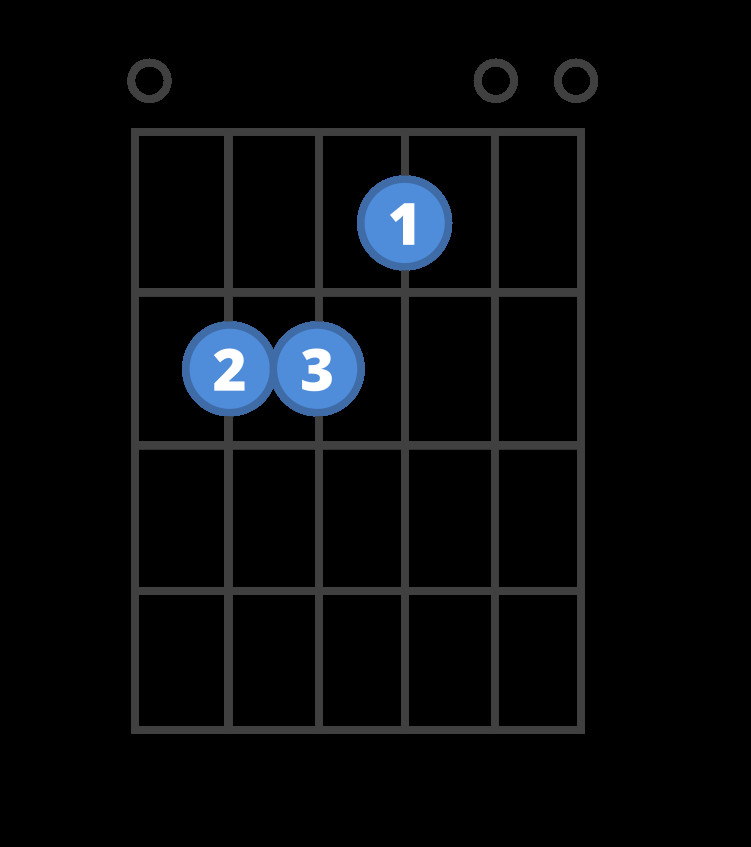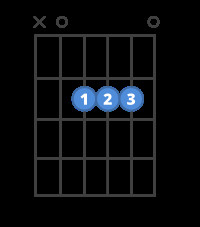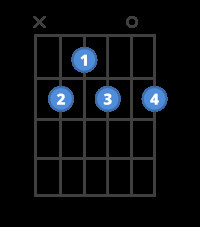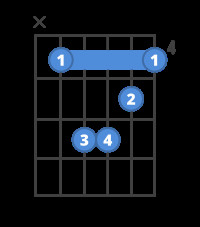The E major chord is a foundational chord for anyone starting their guitar journey. It’s among the first chords you’ll likely encounter and master, opening up a vast world of songs and musical possibilities. This guide will walk you through how to play the E major chord correctly and why it’s so crucial to your guitar playing.
Step-by-Step: Mastering the E Major Chord
Playing the E major chord might seem a bit tricky at first, but with a little practice, it will become second nature. Here’s a simple breakdown:
- Index Finger: Place your index finger on the 1st fret of the 3rd string (G string).
- Middle Finger: Position your middle finger on the 2nd fret of the 5th string (A string).
- Ring Finger: Place your ring finger on the 2nd fret of the 4th string (D string).
- Strum: Ensure your fingers are pressing down firmly just behind the fret and strum all six strings from the thickest (low E) to the thinnest (high e).
 Chord diagram for the E guitar chord.
Chord diagram for the E guitar chord.
Make sure each string rings out clearly. If you hear buzzing, adjust your finger positions slightly until the sound is clean and resonant.
Why is the E Major Chord So Important?
The E major chord is incredibly versatile and appears in countless songs across various genres. Understanding and mastering it is essential for several reasons:
- Common Chord Progression: E major frequently appears in common chord progressions, particularly the I-IV-V progression in the key of E major itself (E-A-B). You’ll also find it in other keys and progressions.
- Foundation for More Chords: Learning the finger placement for E major helps develop finger strength and dexterity, which are crucial for learning more complex chords later on.
- Songwriting and Jamming: Knowing the E major chord opens doors to songwriting and jamming with others. It’s a staple chord in blues, rock, pop, and country music.
Songs You Can Play with E Major
Once you’ve got the E major chord down, you can start playing some easy songs! As mentioned in the original article, progressions like E-A-B and E-B-C#m-A are very common.
Let’s revisit the examples provided:
- “Beast of Burden” by The Rolling Stones: This classic rock song perfectly demonstrates the E-B-C#m-A progression. Try playing along and you’ll immediately recognize the sound!
- “Mean” by Taylor Swift: Similarly, “Mean” uses the same E-B-C#m-A pattern in its verses, showcasing the chord’s versatility across genres.
You can explore many other songs online by searching for “songs using E major chord” or “easy guitar songs E major”.
Next Steps: Expanding Your Chord Knowledge
After mastering the E major chord, you should definitely learn chords that commonly accompany it. The original article correctly points out A major and B7 as excellent next steps.
[ Chord diagram for the A guitar chord.
Chord diagram for the A guitar chord.
HOW TO PLAY
A Major](/chords/a-major)
[ Chord diagram for the B7 guitar chord.
Chord diagram for the B7 guitar chord.
HOW TO PLAY
B7](/chords/b-7)
These chords, along with C# minor (C#m), will allow you to play a huge number of songs and further develop your guitar skills.
[ Chord diagram for the C#m guitar chord.
Chord diagram for the C#m guitar chord.
HOW TO PLAY
C# Minor](/chords/c-sharp-minor)
Conclusion
The E Major Guitar Chord is more than just a chord; it’s a gateway to musical expression on the guitar. By mastering this essential chord, you’re taking a significant step in your guitar playing journey. Keep practicing, explore songs that use E major, and continue expanding your chord vocabulary. Happy playing!

